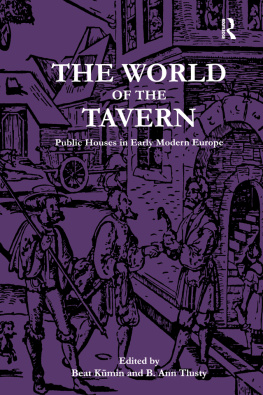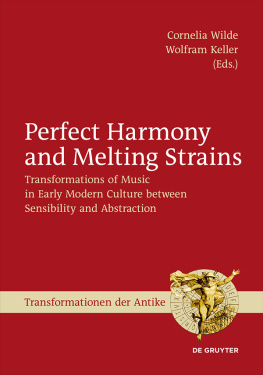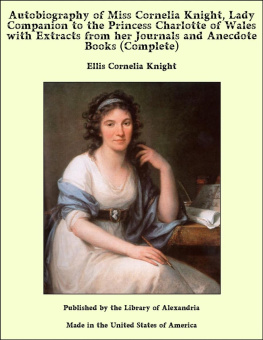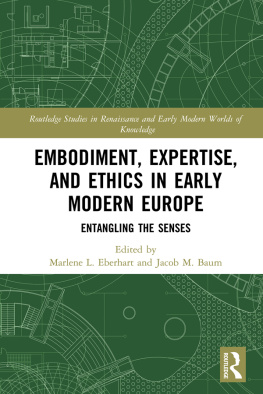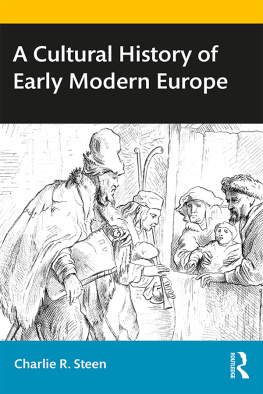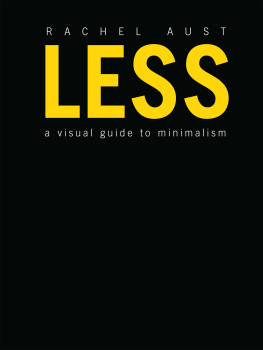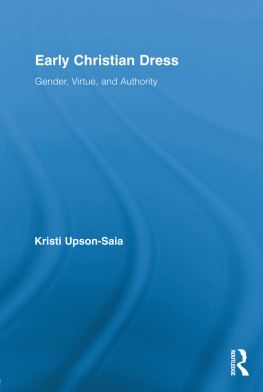Introduction
Cornelia Aust
Denise Klein
Thomas Weller
Dress has always been one of the most obvious markers of difference. Very close to the body, vestimentary signs become part of the daily habitus and an unavoidable means of communication. Whereas most material objects of symbolic communication and social distinction are distant from the body, dress constitutes a second skin and is thus more likely than any other item to be identified with its wearer. Many languages capture this relationship in the proverbial expression clothes make the man. And many cultures have folktales in which the motif appears. For instance, there is that of Nasreddin Hoca, the witty and wise hero of hundreds of stories told for half a millennium from the Balkans to the Middle East and Central Asia, who once went to a banquet where nobody took notice of him. On the next occasion, he put on his best clothes and found himself being treated with the utmost respect, whereupon he fed his soup to what had earned him this honor, his coat, telling it, Eat, my fur coat, eat!
Dress tells stories about identity and belonging as well as about exclusion and stigmatization. An expensive fur coat allows for the display of its wearers status and wealth, yet old and patched clothes also mercilessly display his or her poverty and indigence. Clothes, moreover, make it possible for people to play with identities and affiliations. For instance, donning certain forms of dress enables individuals to claim higher social status, experiment with gender roles, and display or disguise their religion. It is this ambiguity of dress that makes it open to manipulation by the wearer and misinterpretation by the observer. This issue of the European History Yearbook investigates the intricate character of dress in society, focusing on a number of different European regions and their global entanglements in the early modern period.
The way people dressed acquired a new significance but also became more deceptive amid the early modern worlds increasing social complexity. The growth of urban populations in most of Europe led to a higher degree of social differentiation, a process that went hand in hand with new perceptions of the self and of the place of the individual in society. Since the Middle Ages people across the continent had come to consider themselves and everyone else to be part of a strictly hierarchical order in which everybody occupied a specific place according to his or her social status, gender, ethnic belonging, and religion. As symbolic communication and ritual were essential for the legitimation and confirmation of this social and political order, and as social relations depended to a much greater extent than today on face-to-face communication, the particular place of the individual in society had to be visually apparent to the external observer at first sight. Against this background, and with the growing wealth of early modern urban elites and the intensification of global trade, which brought new materials for making clothes and accessories, it comes as no surprise that dress and fashion became increasingly important means of social distinction and self-fashioning. For Western Europe, where this process began during the late Middle Ages and intensified during the Renaissance, a striking example is provided by the sixteenth-century Augsburg patrician Matthus Schwarz, who had himself portrayed more than 130 times wearing different attire. In Ottoman Europe, the new significance of dress is evident, for instance, in the growing number of political treatises and social satires that discuss the clothing choices of the elite and mock the sartorial attempts of social climbers and the nouveau riche, from the second half of the sixteenth through the eighteenth century.
In reaction to economic and socio-cultural transformations and in an effort to bring order to the increasingly complex social universe, religious and secular authorities on all levels and across Europe enacted an ever-growing number of sumptuary laws. In the Holy Roman Empire alone, sumptuary legislation produced more than 1,300 regulations between 1244 and 1816. However, the timing of authorities heightened interference in how people dressed differed significantly from region to region. In some Italian cities, regulations on dress were already common in the thirteenth century. In England, the sixteenth century was the heyday of sumptuary legislation, whereas in most other parts of Western Europe regulations peaked in the seventeenth and tailed off in the eighteenth century. In Ottoman Istanbul, clothing legislation had existed for centuries but gained momentum only in the early eighteenth century with the development of a new middle class, urban culture, and heightened consciousness of fashion. In certain south-eastern European regions under Ottoman rule, by contrast, clothing regulations appeared only in the late eighteenth century, as Constana Vintil-Ghiulescu shows in her contribution to this issue. Internal Jewish sumptuary laws, as Cornelia Aust describes, existed in Renaissance Italy and again in seventeenth- and eighteenth-century central and east-central Europe. The effectiveness of sumptuary legislation is debatable, and other sources, such as inventories, provide only a limited corrective. Yet the mere existence of these numerous regulations highlights the fact that the visual representation of difference by dress was a key concern of early modern European societies.
The primary goals of sumptuary legislation varied from period to period and from region to region, but across Europe throughout the early modern period hierarchic dress codes definitely constituted its classic form. This legislation aimed at marking social difference first and foremost by restricting the use of certain extravagant clothes and luxury items to members of certain social strata. In the Holy Roman Empire, for instance, an imperial ordinance of 1530 allowed only noblemen to wear golden chains of up to 200 florins, whereas wealthy burghers had to abstain from these expensive pieces of jewelry even though they could afford them. In the Ottoman Empire, an imperial decree of 1727 enjoined commoners from wearing ermine fur. Some of these regulations made only very rough social distinctions, but others were extremely detailed. An ordinance issued by the city of Strasbourg in 1660, for instance, listed what members of no less than 256 professions divided into six status groups were and were not allowed to wear. Clothing laws of that kind were promulgated over and over again, indicating that dress codes were not necessarily closely adhered to and were, in practice, continuously renegotiated. For instance, Constana Vintil-Ghiulescu highlights in her article that Romanian boyars in the eighteenth century tended to maintain the public display of luxurious clothes and accessories regardless of the law, in order both to outdo their peers and to display their sense of superiority vis--vis their Greek overlords from Istanbul. While commonly concerned with the appearance of both men and women, some clothing regulations pertained predominantly or even exclusively to women, who were seen as especially prone to expensive fashion and immoral behavior.




